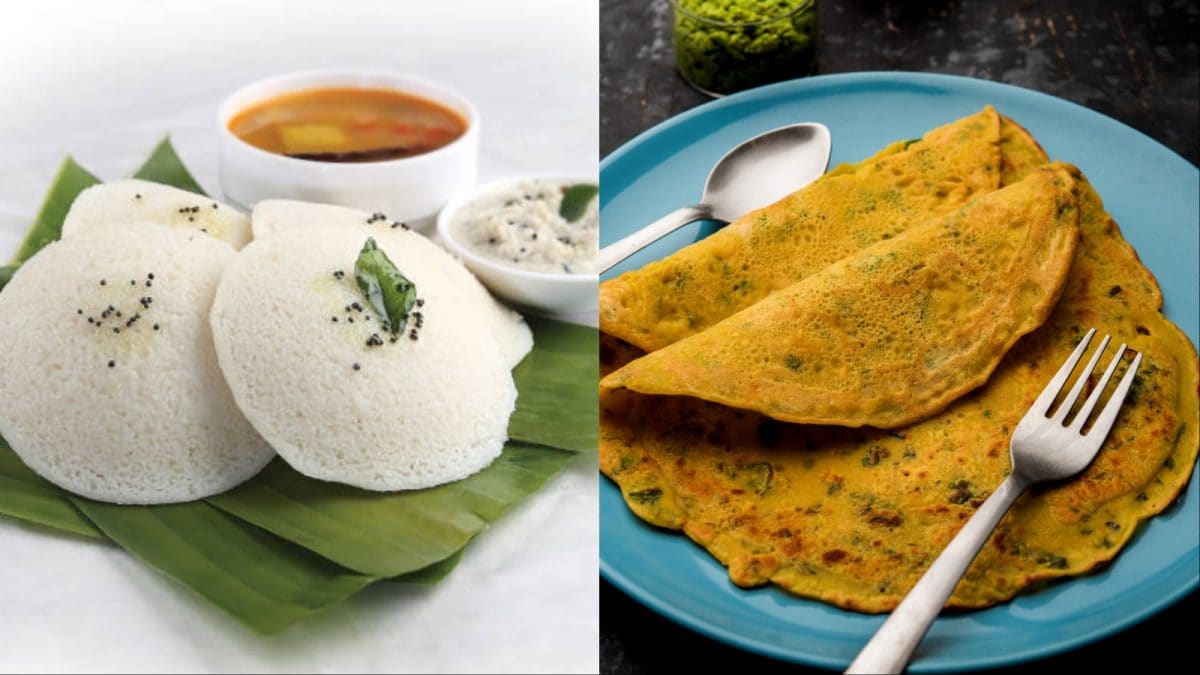Idli Vs. Moong Dal Chilla: Which Breakfast Supports Your Weight Loss Goals Better?

Last Updated:August 06, 2025, 14:49 IST
While these id;li and moong dal chilla are classic breakfast picks, you should choose one that aligns better with your fitness goals.

Alternate between idli and moong dal chilla based on your fitness goals.
From North to South India, breakfast menus are packed with regional delights, and when it comes to healthy choices, the variety is impressive. Among the most popular are idlis and moong dal chilla, two dishes that are not only delicious but also rich in nutrients to keep you full and energised.
Whether you’re on a weight loss journey or simply looking for a light, nourishing start to your day, both are excellent picks. But which one aligns better with your fitness goals? Here’s a quick guide to help you choose the right option for your plate.
Idli vs Moong Dal Chilla: A Nutritional Comparison
Idli: One idli contains roughly 35 to 40 calories. Low in fat and easy to digest, idlis are made from a blend of fermented rice and urad dal. That is making them a source of carbohydrates.
Moong Dal Chilla: A single moong dal chilla provides around 120 to 130 calories. While it’s higher in calories than an idli, it offers more protein and dietary fibre.
Idli vs Moong Dal Chilla: Which Option Keeps You Full?
If you’re looking for a breakfast that keeps you full until lunchtime, moong dal chilla may be the better pick. Nutritionist Rashi Chowdhary explains that dal and dal-based batters digest slowly, helping you stay full longer and curb mid-morning cravings. The protein and fibre in moong chilla also support stable blood sugar levels, reducing the risk of sudden spikes and energy crashes that lead to unnecessary snacking.
Idlis are light and easy to digest, but their high glycaemic index means they break down quickly. Without a protein-rich side like sambar, you may find yourself reaching for a snack sooner than you’d like.
Idli vs Moong Chilla: Which One Is Better For Your Gut?
When it comes to digestion, idlis hold a slight advantage. Thanks to the fermentation process, they naturally encourage the growth of good bacteria, supporting gut health and aiding digestion. Their soft, fluffy texture is gentle on the stomach, making them an ideal choice for those dealing with acidity or digestive sensitivities.
Moong dal chilla, while highly nutritious, can sometimes cause discomfort if your gut isn’t used to lentils, especially when the dal hasn’t been soaked properly. Nutritionist Rashi Chowdhary recommends soaking dals for at least 4–6 hours. This process helps break down the outer layer, making digestion easier and reducing the risk of gas or bloating. That said, if lentils are already a regular part of your diet, moong chilla should pose no issues.
Final Take on Weight Loss: Idli vs Moong Chilla
When it comes to weight management and curbing cravings, moong chilla takes the spotlight. Rich in protein and fibre, it promotes satiety, keeping you full for longer and helping prevent unnecessary snacking. It fits seamlessly into a calorie-conscious diet, especially when paired with curd or a fresh mint chutney for an extra boost of nutrition.
That said, idlis still hold their ground. When prepared with healthier alternatives like ragi or oats and served with a bowl of sambar, they make for a light, wholesome, and gut-friendly meal. The smartest strategy? Alternate between the two based on your appetite, schedule, and fitness goals. Tune into your body’s signals and let your plate evolve with your needs.
view comments
- Location :
Delhi, India, India
Read More
[title_words_as_hashtags




